
SUN, MOON & STAR (PLANETARY CONJUNCTIO)
SUN, MOON & STAR (PLANETARY CONJUNCTIO)
A major discovery which is covered throughout this web site, is that anciently alchemy and astrology was intimately intertwined. Anciently, neither of these sacred sciences was practiced independently, but as part of synergistic centered set of disciplines with a single goal: achieving the Opus Magnum (moving forward the spiritual evolution and perfection Soul of Man). The goal of physical alchemy itself was to prepare elixirs powerful enough to extending life indefinitely. This was necessary because only immortality would enable an extension of both life, and learning. This extended learning would allow one to continue to delve into the mysteries of the soul itself, with the eventual goal of mastery over one's own consciousness and spiritual and physical at-one-ment with God. To this end the ancients watched the planets, and mapped them, learned of their subtle influences on life, and chemistry.
The most important periods for preparing elixirs varied was based on what was desired. The production of the final Philosopher's Stone required precise timeing with specific planetary and stellar syzygies (planetary aligments). The Green Dragon elixir (Amrita•Soma®) was best produced under the Full Moon. These 'alchemical operations' are briefly described on our Astrology and Alchemical Operations page.
Evidence can be found around the world, at points of intersection with the ancient 'corridors of the magi,' which prove that this advanced knowledge was shared with those the ancient Esoterics of the cosmo-religion felt were spiritually in tune enough to benefit from such extended health and vitality. A vast majority of these sites can be found in the Great Basin of the North American Continent; the 'oft mentioned 'Promised Land' of many ancient texts; on this continent — specifically. One site in particular which demonstrates just how advanced the level of sophistication of these early astrologer-alchemist-priests was, can be found on our Astrological Conjunctio page.
.
MORE COPY & IMAGES COMING SOON!

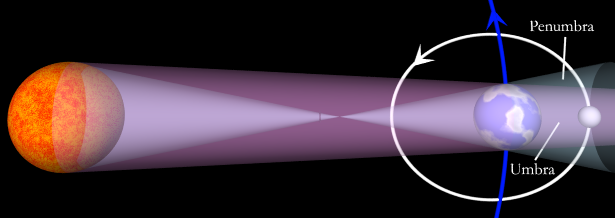
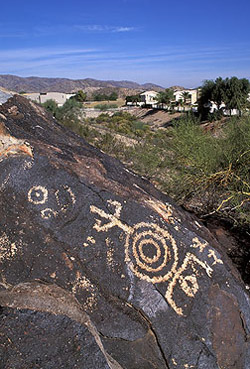
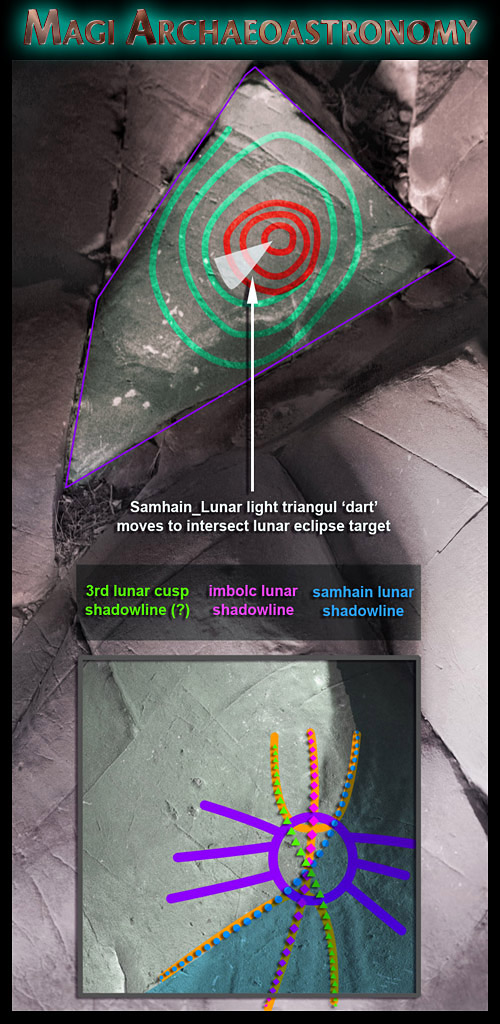
ESOTERIC COSMOLOGY
ESOTERIC COSMOLOGY
During the 1980s an independent group of renegade physicists collaborated on a project to describe the fundamental aether. Having developed a working model of what has been called a linear capacitor by Thomas Townsend Brown,
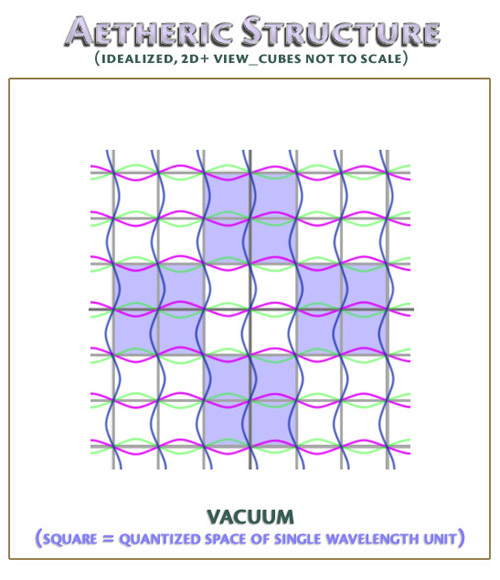
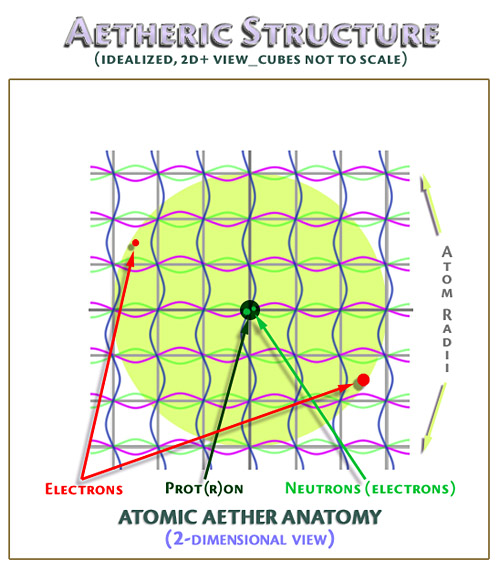
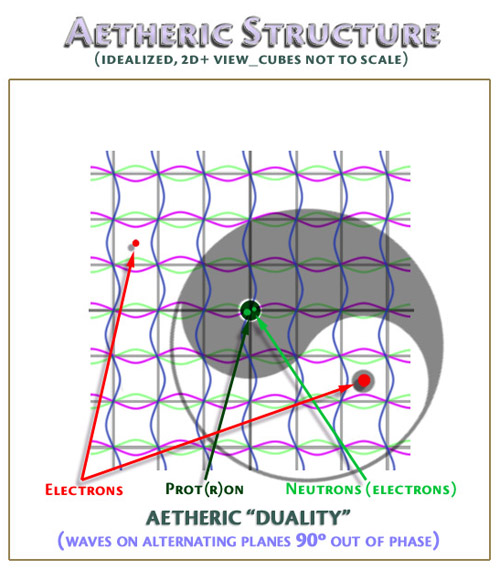
The Monad of esoteric traditions expressed the aetheric (atomic) duality perfectly.
For more on the Waltman-Taddei aetheric cosmology, click here.
SACRED GEOMETRY
SACRED GEOMETRY
COPY & IMAGES COMING SOON!
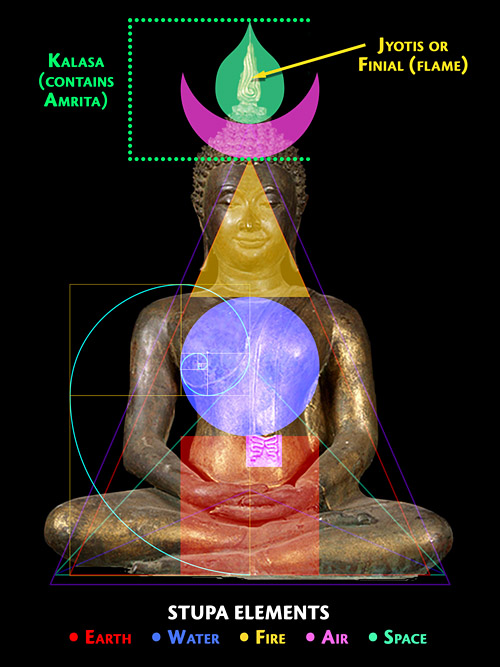
Idealized Buddha represents the sacred geometry, and is based in Amrita alchemy (click for larger image)
ORIGINS OF THE SEPHIROTH
ORIGINS OF THE SEPHIROTH
COPY AND IMAGES COMING SOON!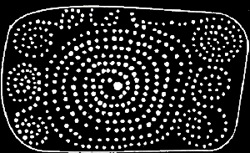
Original Sephiroth? 16,000 BCE ivory medallion of drilled holes. Location, site of Irkutsk, Lake Baikal, Siberia

Carved bone slip (2 sides) from Lochrew, Ireland ca. 2200 BCE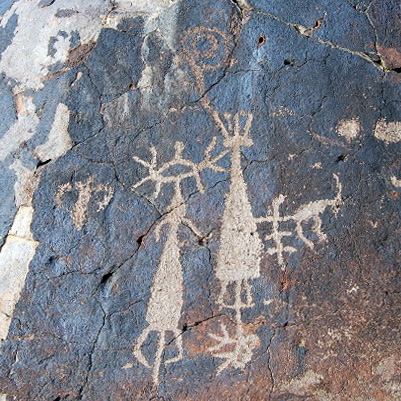
Rock art depicting tripled-god headress on male, consciousness eye on female, and basic Sephiroth (Sheep Canyon, NV)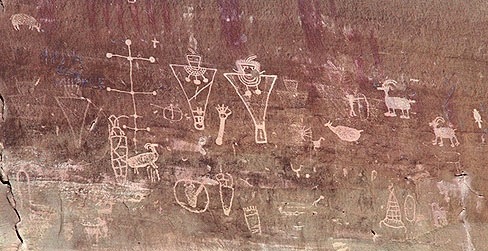
Freemont style rock art. Sephiroth and a pair of Magi. (Sego Canyon, UT)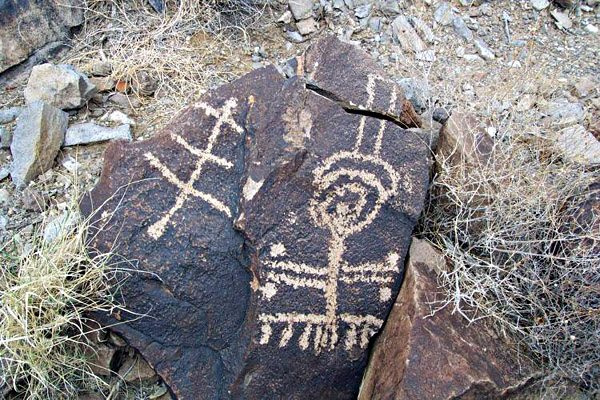
Tree of Life (Sephiroth), two versions. One verifies the interpretation of the other. (Sloan Canyon)
TRIUNE PRINCIPLES
TRIUNE PRINCIPLE - OVERVIEW
COPY & IMAGES COMING SOON!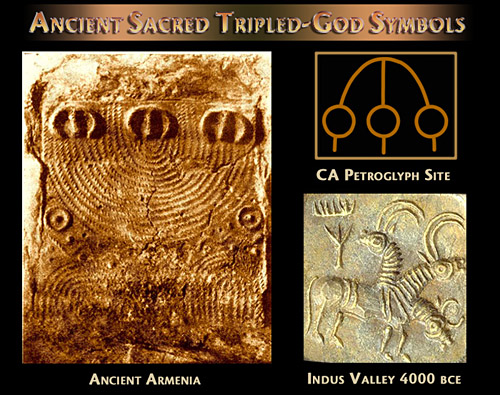
ALCHEMICAL OPERATIONS
3 PRINCIPLES – MERCURY, SULFUR & SALT
3 PRINCIPLES – MERCURY, SULFUR & SALT
Alchemy considered all creation of consist of 3 elements. This triune principle consists of philosophical:
MERCURY – Stationary dynamic aether
SULFUR – A traveling aetheric amplitude, also known as a photon
SALT – Material matter (common atoms and molecular stuff)
Paracelsus, the well known European alchemist, referred to three primary building blocks of the Universe as: mercury (watery element), 2) sulfur (fiery element), and 3) salt (earth element).
Esoterically, mercury is the aether itself and so was understood to pervade all of nature. Referring to mercury as watery is understandable when we recall that the aether is also linked to the "waters" of creation (waters above and below the firmament, or dome of the sky), primordial waters of the Egyptians (nun), and so on, by its nature as a standing wave structure. The aether – known as the Holy Spirit, the shakti energy, Soph (Sophia) of the Gnostics, the ALL of the Hermeticism – was always conceived as a feminine or passive element in esoteric traditions. The reason for this is because although a dynamic force, it is stationary in its position within the universe (this was once called stagnant in Classical Physics) even though it is locally/internally dynamic. The mercury itself is not a physical construct, until it is polarized (through the effect known as duality) and forms an atom. However, it is probably due to the aether acting as a primordial womb, as it were, for matter, for which it was primarily seen as passive or Yin.
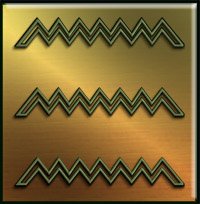
Egyptian 'Nun' hieroglyphic symbol, representing the aetheric medium or 'primordial waters'
Esoterically, Mercury is the aether itself, also known as the Holy Spirit, the shakti energy, Soph (Sophia) of the Gnostics, the ALL of the Hermeticists, and so on. Alchemical mercury pervades all of creation, and although a dynamic force as our science sees it, is seen as passive or female in its attributes by esotericists. It is stationary in its position (this was once called stagnant), but is is locally/internally dynamic.
Alchemical Sulfur was associated with fire. Paracelsus associated Sulfur with the element of air. Alchemical Sulfur too was considered one of the three primary building blocks of the Universe. Esoterically, Sulfur represented will forces (emotive forces and passion), and therefore is an essential component of all mystical operations. Since the ancients knew that sulfur burned, and all the light sources they know of gave off heat (with the exception of planets and stars), we can easily understand that light and heat were linked in their minds, but the alchemical version of Sulfur really stands for the force of light amplitude within the aetheric structure. This is the force (radiation) which instigates actions at a distance. Light, shifted down in energy, passes the aetheric base frequency threshold (in the microwave range, at -273º Kelvin), to become magnetic frequencies, and thus is directly linked to heat and (Brownian motion).
For Paracelsus, alchemical Salt was associated with the element of earth and was the last of the three primary materials of creation. Esoterically, Salt was considered by European alchemists to be associated with the One Mind, the astral body, and with the action of thought upon matter. This is perfectly understandable in our aetheric model as it was light, projected from the mind of God, which caused polarity within the fabric of space (aether). The most well known version of the account of God's 'creation' of duality is recorded in the Torah/Bible. God says (thinks) 'let there be light.' This light-amplitude impulse, chirped into its highest energy possible, causes the aetheric fabric to be moved, or disassociated, one part of the aetheric structure (node) assuming a new position, juxtaposed with and opposed by the tessellated structure of the aether itself, as depicted in the well known symbol the Monad (yin-yan). (For more information, see the AETHER COSMOLOGY tab under this section)

Monad, a balanced state of opposing Yin-Yan forces (see our AETHER COSMOLOGY tab under this section)
This creation (using 'chirped' light energy) is described in the esoteric text the Kolbrin. (For those interested in this valuable collection of esoteric texts, please see www.thekolbrin.com for more information). From this single version of the story of original creation many Hermetic principles can be deduced. In our humble opinion this cosmologically correct version of the story should be carefully perused by anyone hoping to understand true cosmology, or true religion.
Excerpt from the Kolbrin
BOOK OF CREATION
Chapter 1 — Creation
5.
He who preceded all existed alone in His strange abode of uncreated light, which remains ever inextinguishable, and no understandable eye can ever behold it. The pulsating draughts of the eternal life light in His keeping were not yet loosed. He knew Himself alone, He was uncontrasted, unable to manifest in nothingness, for all within His Being was unexpressed potential.
6.
The Great Circles of Eternity were yet to be spun out, to be thrown forth as the endless ages of existence in substance. They were to begin with God and return to Him completed in infinite variety and expression.
7.
Earth was not yet in existence, there were no winds with the sky above them; high mountains were not raised, nor was the great river in its place. All was formless, without movement, calm, silent, void and dark. No name had been named and no destinies fore-shadowed.
8.
Eternal rest is intolerable, and unmanifested potential is frustration. Into the solitude of timelessness came Divine Loneliness and from this arose the desire to create, that He might know and express Himself, and this generated the Love of God. He took thought and brought into being within Himself the Universal Womb of Creation containing the everlasting essence of slumbering spirit.
9.
The essence was quickened by a ripple from the mind of God and a creative thought was projected [chirped light amplitude]. This generated power, which produced light, and this formed a substance like unto a mist of invisible dust. It divided into two forms of energy through being impregnated with The Spirit of God and, quickening the chaos of the void within the Universal Womb, became spun out into whirlpools of substance. From this activity, as sparks from a fire, came an infinite variety of spirit minds, each having creative powers within itself.
10.
The activating word was spoken, its echoes vibrate still, and there was a stirring movement which caused instability. A command was given and this became the Everlasting Law. Henceforth, activity was controlled in harmonious rhythm and the initial inertia was overcome. The Law divided the materialising chaos from God and then established the boundaries of the Eternal Spheres.
11.
Time no longer slept on the bosom of God, for now there was change where before all had been unchanging, and change is time. Now within the Universal Womb was heat, substance and life, and encompassing it was the Word which is the Law.
12.
The command was given, "Let the smallest of things form the greatest and that which lives but a flash form everlastingness." Thus the universe came into being as a condensation of God's thought, and as it did so it obscured Him from all enclosed within His solidifying creation. Henceforth, God was hidden, for He has always remained dimly reflected in His creation. He became veiled from all that came forth from Him. Creation does not explain itself, under the Law it cannot do so, its secrets have to be unravelled by the created.
13.
All things are by nature finite, they have a beginning, a middle and an end. An unaccomplishable purpose would be eternal frustration and therefore, the universe being created purposefully it must have an objective. If it ended without anything else following, then the God existing must slumber indifferent to its activities. But He has made it a living work of greatness operation under the changeless Law.
14.
The creating word had been spoken, now there was another command and the power going forth smote the sun so its face was lit, and it shone with a great radiance pouring warmth and light upon its sister Earth. Henceforth she would live within the protection of her brother's household, rejoicing in his benevolence and strength.
15.
The waters upon the bosom of Earth were gathered together and dry land appeared. When the covering of water was rolled back the body of Earth was unstable, damp and yielding. The face of the sun shone down kindly upon his sister and the dry land of her body became very hard, humidity and dampness were taken away. He gave her a garment of fleece and a veil of fine linen, that she might clothe her body with modesty.
ALCHEMICAL MENSTRUUM
ALCHEMICAL MENSTRUUM
COPY & IMAGES COMING SOON!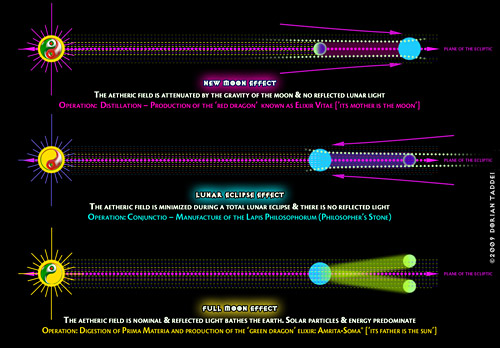
Illustration demonstrating the three types of luni-solar syzygies, and their corresponding alchemical operations (Click to see larger image)
CONSCIOUSNESS & HERMETIC DRIFT
CONSCIOUSNESS & HERMETIC DRIFT
Hermetic Drift
Below is an image of this Mercury glyph, in the upper panel is the original, and in the lower, the QE symbol is highlighted in orange We have indicated the other two symbols found beneath it in blue-green and magenta. The mercury glyph is carved over these older symbols, which are so low in relief that only he steepest sun angle reveals their faint residual marks.
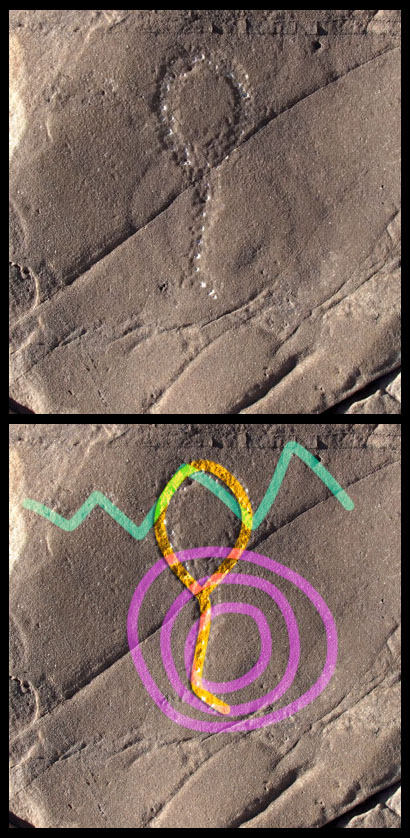
One petroglyph carved over two others with the equivalent meaning
There appear to have been to reasons for re-pecking this design over the other two older variants. This was done, first, to replace a warn older petroglyph almost invisible to all but the careful observer who visits this site in late afternoon light. And secondly, the intention seems to have been to update these meanings, by those who shared an intimate knowledge of the archaic alchemy and astrology of their predecessors (part of the continuing mission of the cosmo-religion to spread true religion to the entire world). When we realize that this site is but one of tens of thousands, perhaps millions of such sites across the globe – known, mapped, and used by those who continued their teaching missions through the many millennia of time spanning the neolithic through the earlier centuries of this era – it makes sense that updating important sites might be a job worthy of minimum of effort.
A Rosetta Stone
The overlapping of different symbols, sharing the same or equivalent meanings, is not merely vandalism, or due to a shortage of appropriate rock faces. The example above appears on a rock face with plenty more room for more carving. We hold that this re-pecking indicates both an on-going knowledge of the esoteric traditions of the past (as passed on directly, or learned from earlier esoteric sources), and a deliberate attempt to update this information for a more contemporary audience.
Why update such symbols? One answer is rather obvious. As languages evolve, meanings (often extremely subtle ones), are lost in this process – a condition which tends to be more devolutionary than evolutionary. Like modern worlds in extant languages,as societies intermingle, so additional nuances are added to words and older meanings tend to get lost in the shuffle. Additionally, as we consider also the condition known as hermetic drift (the inevitable confluence of esoteric ideas which tended to merge with one another and cross-pollinate yielding new compounded concepts), it is no wonder that earlier symbols would come to replace older ones. This is why this alchemical 'Mercury' symbol – representing the QE – was pecked to both reinstate the older pair of glyphs, as well as to replace them as they became highly worn and virtually unintelligible.
To transliterate the meaning of the original symbols, we offer this esoteric interpretation.
The tripled target petroglyph represents the alchemical-astrological connectivity at this site. These tripled targets indicate operations done at lunisolar syzygies: new moons, full moons and eclipses, the mark primarily indicating the full lunar eclipses (see 'Eclipse Science').
The tripled-target has 3 meanings as well. It would be perhaps prudent to remind the reader of the tripled' concept principles at this juncture. However, this will be covered more fully under the tab in this section of the site, titled TRIUNE PRINCIPLES.'
1) Triune Principles
2) Astrological conjunctio
3) Alchemical Conjunctio
The upper 7-turn zigzag symbol represents consciousness, of more precisely, a movement experienced by those who – temporarily caught up in the 'bardo' experiences of the mind, find liberation and enlightenment. The Hebrew alphabet carries with it esoteric connections. The version of the far more ancient esoteric teaching tradition know today as Kabbalah, was adopted and expanded by Hebrew priesthood, to embed both numerical, directional (based on the 'cosmic cube'), and other esoteric shades of meaning into their 22 character alphabet. The letter Zayin carries both the numerical value of '7,' and also refers to a transition (as in harmonics and the diatonic scale) between 7 and octave, 8. This transition refers to the release of the human spirit from the body (and consequently, the aetheric material universe, the cube of space), which happens on the seventh turn (angle) of the spirit caught in the bardos (if the spirit manages to gain release, that is).
What do we mean? For those who have had experiences with altered states of consciousness, this is not a strange concept, but part of the 'mystery of the ages.' However, for those who are not so inclined, what follows is more in-depth explanation of this phenomena.
The Bardo Experience (the Holographic Mind)
In the bardo the movement felt as one is trapped in what Thoth called moving through the (strange) 'angles' (see the Emerald Tablet of Thoth), could be described as a 6-forward, 6-back (6-up and then 6-down) movement. This is a very real experience, and has been symbolized in several interesting ways down through esoteric history, and was re-discovered during the early years of research into the powerful entheogenic (aka psychedelic or "mind manifesting") compound known as LSD-25 (d-lysergic acid diethylamide tartrate). Although all private, as well as clinical research, was suppressed by clandestine CIA-sponsored programs (designed to end the public availability and use which resulted from their own legacy of LSD testing and use), much has been compiled from earlier studies, as well as gleaned from the on-going use of such substances in the public sector (some MAPS resources).
When subjected to paranoid circumstances, and exposed to harsh ego-threatening environments, scientists running human trials with LDS-25 noticed their patients began to writhe in a strange forward and backwards zig-zag motion. This became referred to erroneously as an LSD 'seizure.' However, later studies showed that these were not seizures, in the clinical sense (no demonstrable EEG signatures), and that patients were fine after the tense situations were reconciled.
The author has had personal experiences with these states, and with this phenomenon, as well as having witnessed (and talked down) many individuals with similar experiences in the 'bardos,' as induced through psychedelic chemistries. These are not grand mal seizures, as there is no 'tonic' phase, and what would pass as a 'clonic' phase is not uncontrolled, but an extension of the visual excitation and form geometry projected by the visual centers of the brain. Additionally, no unconsciousness is experienced, and there is no loss of bladder or bowel control, unless there is a complete separation of the spirit from the body (so-called 'clear light' experience or 'attainment of Nirvana'), and such cases are extremely rare.
So, what were they experiencing? The answer is nothing less than rather uncontrolled (usually triggered by emotional stress) death-rebirthing cycles, and the movement is the mind-body complex interacting with – following its own neural-mental pathways through – the holographic labyrinth of consciousness, as it travels back and forth, in and out of the physical world (Samsara).
Those experiencing ego-separation and this re-birthing phenomena after receiving the proper training, are often able to control these states, often with remarkable regularity. Recording their experiences, these records become a travel brochure to re-birthing. In the ancient traditions of Buddhism, these states are collectively labeled the 'bardos' (see the Bardo Thodol). Bardo Thodol translates to mean:
Bardo – being on the "threshold" of or between two different existential states
Thodal – liberation
The Bardo Thodol (Tibetan Book of the Dead) has its counterparts in the Egyptian Book of the Dead, and also in the Emerald Tablet(s) of Thoth. In Tibetan the word bardo:
. . . sometimes translated as Liberation Through Hearing or Bardo Thodol is a funerary text. It is often referred to in the West by the more casual title, "Tibetan Book of the Dead," a name which draws a parallel with the ancient Egyptian Book of the Dead, another funerary text.
The Tibetan text describes, and is intended to guide one through, the experiences that the consciousness has after death, during the interval between death and the next rebirth. This interval is known in Tibetan as the bardo. The text also includes chapters on the signs of death, and rituals to undertake when death is closing in, or has taken place . . .
Tibetan practitioners of advanced meditation techniques train themselves to experience these states at will. The idea is to prepare for real re-birth, and to control re-entry so as to be born under favorable circumstances. Those who can control their re-entry are referred to as Bodhisattvas.
Anciently, dance steps and styles, as well as myths and legends, were used to codify this experience into esoteric symbolism. A famous example of such symbolism is found in the story of the Theseus, and his saving forth 7 virgin men and 7 virgin women from the Labyrinth of Minos, this with a little help from Ariadne and her silver thread. The entire myth of the Minotauros can be shown yet another version of the epic tale of to be the story of a savior who leads the people of Earth out of Samsara (labyrinth) and into consciousness.
[More on this and other topics, coming to the Saturn Productions website, Stay tuned]
The name "Theseus" has been found on two Linear B tablets (necessarily of Mycenaean time), identified as "Servant of the God" (Silver). So the legendary Theseus may have been based on a real individual, perhaps one of the first to visit Crete after the Theran catastrophe. According to the Larousse Encyclopeadia of World Mythology, and also according to Bullfinch, the heroic Theseus actually existed . . . According to Larousse, this would have been shortly before the end of the Mycenaean era . . . however, his reputation might well have survived the Greek Dark Ages through the medium of bardic tales, and been attached to the Minotaur legend in the same anachronistic manner as some elements of Homer's Iliad.
This same Theseus was said to have been one of the Argonauts who sailed with Jason on the quest for the Golden Fleece . . .
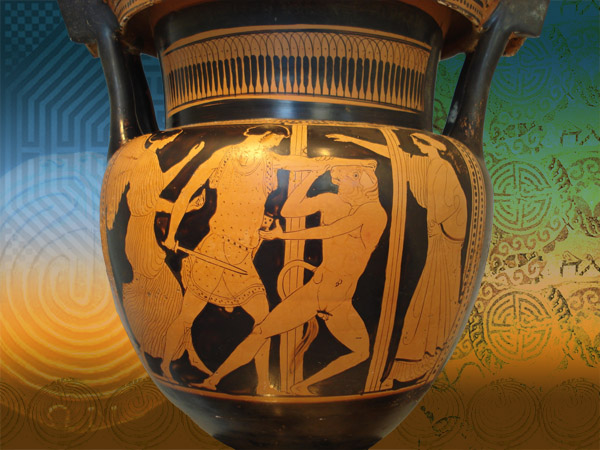
Attica vase depicting the epic struggle for release from Samsara depicted in story of Theseus and the Minotaur (ca. 460 BCE)
Even the etymology of the word Ariadne – from the same root as Arachnid, or spider – speaks to the knowledge of cosmology (the silver thread of consciousness, the aetheric fabric, etc.), consciousness and the concepts (so common in esoteric traditions) of the two trees, one of knowledge (entheogens), and the other of life, or immortality (as this relates to the Amrita, Soma, elixir of life, and so on). The tale of the Golden Fleece has "philosopher's stone" written all over it.
From an article titled, “Hermeticism and the Golden Fleece,” by Joseph Caezza (pg. 1), we read:
“Every century and upon every continent a handful of exceptional men are born who possess the innate ability to read the signatures of nature directly, to see immediately into the mystery of continuous creation and to know pristine reality revealed by the power of imaginal identification. Such vision differs radically from twentieth century pedestrian academic mentality. These sages have bequeathed us a legacy of artifacts fine as the thread of Ariadne in the form of the good texts of Hermetic Alchemy. These tomes speak from the vein of the forge and the crucible, a mother load in the vast mine of collective imagination about mankind's origin and ultimate destiny. They articulate with artful genius the same message of the hero's journey embodied in the great world myths. A generation ahead of mythic Cadmus, a generation behind Homer's Ulysses, Jason's quest for the Golden Fleece constitutes a fabulous example of the archetypal process of Nature referred to in the Emerald Tablet of Hermes Trismegistus as "the operation of the Sun".
The greatest alchemical adepts, Artephius, Nicholas Flamel, Salomon Trismosen, Michael Maier, Philalethes, Dom Pernety and Fulcanelli among many others have spoken . . . about the bench-top laboratory manipulations revealed in the circumstances of Jason's voyage. Joscelyn Godwin in his brilliant forward to Antoine Faivre's contemporary survey, The Golden Fleece and Alchemy remarks that C. G. Jung anchors Jason's argo along with the Hermetic great work solely to the psychic level of personality integration while ignoring how, why, what and with what, adepts actually do in their laboratories.”
The concept of the Minotaur had several hidden meanings (typical of esoteric symbols), and one of them was meant to refer to this psychedelic body movement (seizure-like) effect. This was symbolized by the bucking of the bull, as it attempts to throw off a predator (or rider, as in rodeos).
[Video clip coming]
This movement is not only experienced by human beings, but by ALL life. This condition is more noticeable in times of ego-dissociative experiences (near death, and psychedelic states are examples of heightened experiences) among humans, and so may be more noticeable among lower life forms under conditions of stress and fear. In mammals these sorts of conditions are accompanied by high levels of the endogenous psychedelic chemical known as DMT (5-methoxy-N, N-dimethyltryptamine in the human pineal gland). In human beings this chemistry is produced as a by-product of the enzymatic N-methylation of serotonin and other amines.
This is why ancient art depicting the Minotaur always include the labyrinth imagery, and often other salient hints of the consciousness connection implied by the myth, like the symbol of the Swastika (or swastika-tetraskele) symbol.
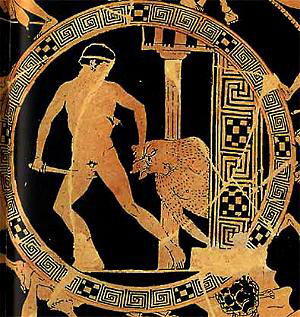
Theseus slaying the Minotauros, with labrys meanders and swastikas
This is the secret esoteric meaning behind the man-bull imagery in the ancient myth of the Labyrinth and Minotaur. This bull connection has several meanings (as do all esoteric symbols of antiquity). These other connections include the age of Taurus (the bull) when the earlier Mediterranean religions were in full bloom (4400-2200 BCE).
Alchemy & Astrology . . . Linked At The Hip?
[Coming soon: Information on the limping smith, thigh bone and ursa major connection!)
Labyrinth Dances & Lamed Smiths & Shaman, etc.
As one experiences a separation of mind and body during mystical states, the physical movements of the mind-at-large and that of the physical body can become one. The individual may begin to move in synchrony to what he or she experiences in the bardo state, the labyrinth of consciousness. This can occur to all human beings experiencing these states. Such movements are the basis of ancient trance dances, the whirling of the dervishes, the Amerindian sun dances, and labyrinth-maypole dances from across the ancient world. These dances of consciousness are as ancient as mankind.
In the case of ancient ceremonial rites of re-birthing, it was not unusual for scores of persons to be in-step with this experience simultaneously. It is such group experiences which lead to ceremonial rituals like those of the labyrinth dances, dances where individuals hop (like a partridge, a lamed smith, etc.) through a labyrinth, mimicking the movements of holographic bardo mind-body labyrinthine travel.
These ceremonies eventually devolved into tribal dances like the Amerindian 'sun dances.' Another remnant of these traditions is the maypole celebration, once done exclusively within the center of the labyrinth, representing the hoped-for release from the body (Samsara). Maypoles are still found at the center of many labyrinths, even today. Not surprisingly, some Amerindian cultural practices still involve the labyrinth symbols, and even maypole dance rituals
.
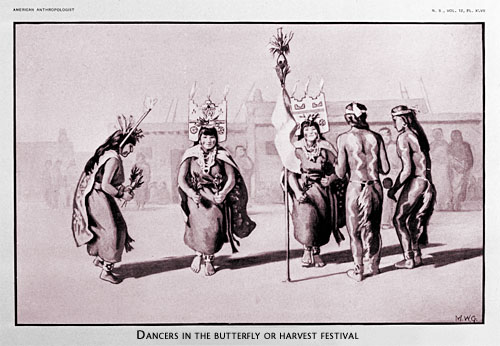
Maypole celebration among Amerindians is a residual memory of the early rituals of the Old World
The spinning, spiraling out of the body, and into the clear light, is still remembered in the famous spinning ecstatic dances of the Sufic 'whirling dervishes." EVen their conic hats and conic dancing cloths point back to the esoteric symbol of the upward pointed triangle, the symbol of union with God. This is living sacred geometry reflected in dance.
Anciently many cultures knew of these revelatory states of ecstasy, and sought for such mystical experiences. Many of the archaic petroglyphs from sites around the world represent esoteric symbolism boron of the universal experience of those who have had an at-one-ment with the divine light. Or, as the Hebrew tradition described it, 'seeing God face to face.'

Whirling 'Dervishes," Sufi dancers in Istanbul
As indicated, these are not seizures, and in ancient cultures those moving in this fashion were revered for being in a state of ecstasy and at-one-ment with their God.
We find yet another contemporary symbol for these bardo movements indicated by the commercial imagery adopted by the psychedelic (acid-rock) band known as the Grateful Dead (below); this graphic off of the "Steal Your Face" album cover. Modern users of these psychedelic (meaning 'mind manifesting') entheogens incorporated their own lexicon of symbols hinting at shared experiences in altered states. However, drawing upon older symbols of ancient esotericism, with its rich history of sacred-science and established disciplines for reaching and maintaining higher states of consciousness, has little to do with the profaned use of such chemistries as prosaic entertainment during all night raves by the uninitiated.
With the 1960s, and the discovery of the psychedelic compounds, came a new generation in search of answers – answers which have laid hidden in the mind of Man, awaiting re-discovery.
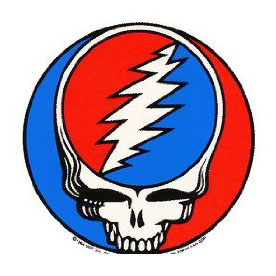
Grateful Dead "Steal our Face' album cover.
Such symbols, and many expressions coming from esoteric traditions, represent a universal experience of those who have had an at-one-ment with the divine light. These are experiences which have been shared by all mankind, but ultimately can only belong to the individual. These at-one-ment experiences (called by many names such as Nirvana, the clear Light of the Void, Heaven, etc.) exist only within the temple within Man, that is, within the private mind-brain complex of those who know; those who have obtained 'gnosis.'
The lot of Man is to question the illusory state of the physical (Samsara), and to seek to overcome the normal state of consciousness (the 'natural man), living as he does on this side of the veil of ego. For it is 'ego,' or self which separates us not only from God, but ultimately, from each other. How do we do this?
The answers to this comprise the ritual systems which were developed by adepts of the cosmo-religion. We believe that although these rituals can vary, the set and setting, and the control over the mind at the point of transition (death) in such altered states of consciousness), can be mastered. It is to those who did anciently master their consciousnesses, that we must go in order to gain the bigger (esoteric) picture of ancient history.
TWO SACRAMENTS — AN INTRODUCTION
TWO (ESOTERIC) SACRAMENTS – AN INTRODUCTION
This is the point where we overlap the themes of cosmology and consciousness. This is inevitable, if we are to explore the nature of creation, as Man's spirit is just as much a part of creation as any atomic structure or 'action at a distance.'
The ancients wisely understood this, and so devised (many) systems of symbolic explanation. However, the ultimate understanding was never thought to come from any form of education, but from the direct spiritual union with the universe itself. This direct 'extra sensory' knowledge was referred to as 'knowing,' or gnosis (from the Greek), Knossos (Cretan), and so on. And so the ancients employed esoteric rituals utilizing "sacraments" which removed the barriers between the spirit and the universal ALL (namely, the ego), for exploration of the inner space of consciousness. This history is provable and the effects reproducible. However, such claims will be likely be treated with hostility.
Since the beginning of time Mankind has continued to loose truth, only to find it again through gnosis. However, as the evidence suggests, much that was lost remained lost, on one level or another. Mankind is not evolving, as much as devolving, from his highest level of spiritual (and intellectual) attainment. This may seem to contradict modern evolutionary theory, but then modern evolutionary theories, as defined, are incorrect. Mankind is not getting smarter, he is only getting more 'practical' in the materialistic sense. What we are loosing is our consciousness, our intuitive brian.
We believe that the ancients both understood and utilized chemicals which naturally advanced evolution by triggering and enhancing consciousness. However, their claims of such spiritual evolution were not without conditions – namely – that these states of higher consciousness were realizable only in conjunction with mental and spiritual disciplines. These class of chemicals represent the first part of the two-part sacrament of all esoteric traditions.
The sacred science of the ancients can increase our life expectancy as a race by both enhancing the natural immune system (See MIRACULOUS MICROCLUSTERS tab under the OMMPA (ORMUS) section in this web site), and by enhancing the aetheric communication between the brain and the body's energy centers (Chakras) and stem cells, providing an optimized environment for natural healing. These class of mineral elixirs were one of the two holy sacraments of occult traditions; the Tree of Life.
In the Old Testament references can be found to both of these sacraments, or Mana(s). They are often described (in many traditions) analogously as the Two Trees of the Garden; the Tree of the Knowledge of Good and Evil, and the Tree of (Eternal) Life, etc.
COPY & IMAGES COMING SOON!
SACRED GEOMETRY – THE SHIVALINGA
SACRED GEOMETRY – THE SHIVALINGA
COPY & IMAGES COMING SOON!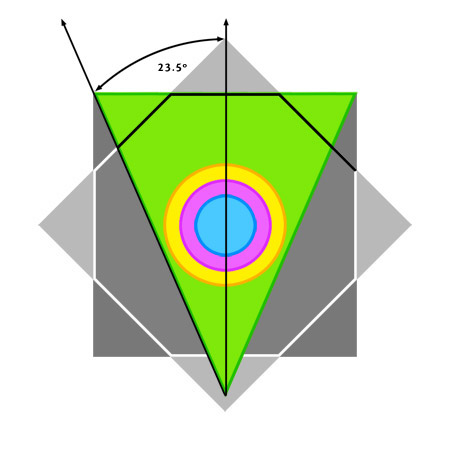
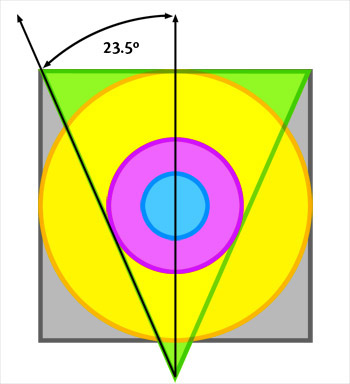
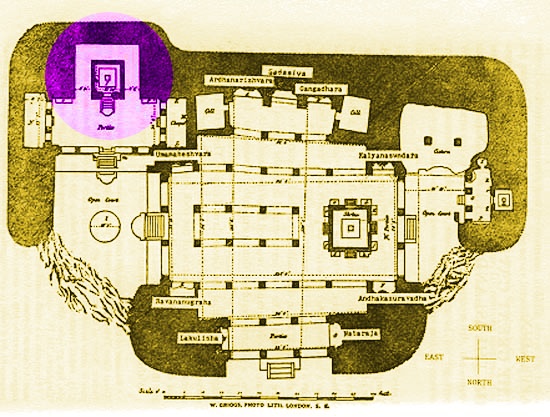
Shiva-linga Elephanta Caves (subterannean temple) near Mumbai, India (ca. 900-1200 CE)
COSMO – RELIGION
THE COSMO–RELIGION
~ THE ORIGINS OF ESOTERIC COSMOLOGY & ALCHEMY ~
It should be stated at the outset that there is only one true cosmology. Described by many traditions through different terms, the 'suchness' of the cosmos is only one in its fundamental structure: one energetic, dynamic, tessellated light structure, or aether. Polarized to form matter, all the laws of the universe flow from the cosmology, and the current state of the aether (duality) as realized and brought into being by the mind of the one true God.
Mankind's manifest destiny was stated simply by Jesus Christ in the following words: "Man, know thyself." Any truly illumined being learns to know themselves: to understand the nature of their own consciousness, and in so doing, their proper relationship to both the ALL (aether) itself, and to the God of nature.
Alchemy is an often misunderstood term. We should not think of alchemy as a single discipline, or as an early version of modern chemistry, but a true form of religion. This being said, we need to define religion. For the sake of brevity we will simply call a true religion any discipline whose principles hold true eternally, and that which contains the principles and disciplines, knowledge and power, to move men and women from a state of ignorance in Samsara, through to awakened beings (consciousness) able to attain a state of at-one-ment with their God.
Staninslas Klossowiski de Rola (in his pictorial work on the Great Work) states the following concerning the ‘art” of alchemy:
"Alchemy is a rainbow bridging the chasm between the earthly and heavenly planes, between matter and spirit...alchemy, the royal sacerdotal art, also called the hermetic philosophy, conceals, in esoteric texts and enigmatic emblems, the means of penetrating the very secrets of Nature, Life, and Death, of Unity, Eternity and Infinity.
Viewed in the context of these secrets, that of gold making is, relatively speaking, of little consequence: something comparable to the super-powers (siddhis) sometimes obtained by Great Yogis, which are sought not after for their own sake, but are important by-products of high spiritual attainment." - Alchemy by S.K. de Rola.
Alchemy, as a tradition, is actually the practice of a true cosmological religion. We will refer to this simply as the cosmo-religion from this point out.
Although we have shown that petroglyphic evidence of advanced human understanding of human consciousness date as far back as 22,000-24,000 years before present (and likely far, far earlier), the roots of the cosmo-religion, as recorded on the rocks — along what I have called the Corridors of the Magi — are not quite as old. Some of the older examples indicating what our culture might call scientific sophistication, appear to exceed 10,000 years in age, with those in Siberia being aMong the oldest in terms of both their sophistication and hoary age.
Every year new sites are discovered which demonstrates that the true age of homo sapiens (in possession of higher consciousness) stretches back into a past so distant, that the modern uniformitarian anthropological projection of Darwinian evolutionary theory is simply wrong.
One antediluvian myth found in writings from ancient India describes the existence of a man-made bridge known as Ramayana (popularly referred to now as Adam's Bridge) between the Indian subcontinent and the island now called Sri Lanka. This story does not seem so far fetched now, after Nasa Space Shuttle imagery revealed the true extent of a series of underwater shoals and rock outcrops which seems to fit this story with uncanny accuracy.
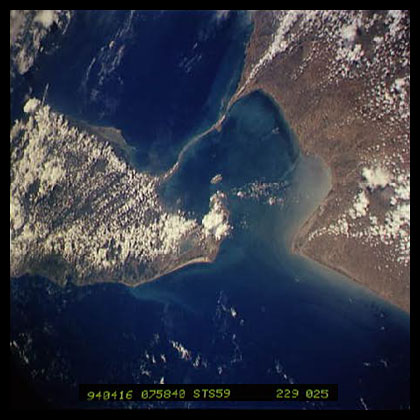
Adam's Bridge structure, as imaged from the Space Shuttle
The jury's still out on whether all or part of this structure was once man-made. However, this begs the question of how this structure could have been known anciently thousands of years before the advent of the modern space age and space imagery. The simple answer would have been that, before the antideluvian flood, water levels were lower and that sections this structure were naturally-occurring and visible along the majority of its length. The question we must ask ourselves is how any ancient culture – before the knowledge of agriculture was supposed to have existed – could have engaged (and fed) the tens of thousands of people necessary for the construction or build-out of such a massive structure? Even more mysterious is why a people would embark on such a venture?
The ancients cultures of India claim that this feat was accomplished by a more advanced race of 'humans' utilizing less aware humans for the hard work. This sort of story is repeated in a number of myths, including the "churning of the ocean of milk," stories of the giants (Annunaki), and so on. We also see similar grand works involving massive human labor at sites around the world, and those accompanied by myths involving their construction usually speak of giants, and what we can identify as the foundational principles of alchemy and astrology. Some sites which come immediately to mind include the great pyramid at Giza, the temple complex at Baalbek, the temple complexes at Teotihoacan (Mexico), and other megalithic structures like the statues of Easter Island. and the massive sacred geometric design on the Plain of Nazca, and so on.
The enigmas deepen as we discover that the majority of sites displaying such large-scale human cooperation lie along geodetic lines (a planet-wide phenomena of energy foci arising from the Earth's movement through the aetheric medium and its relationship to the other bodies of this solar system, manifested as the golden mean/golden section), and are usually associated with the ubiquitous legends of the 'elixirs of life,' springs of water enhancing longevity (fountains of youth), and so on. Jalison's insightful work has identified sinusoidal relationships to sacred sites across the planet.
What is not comprehend in modern anthropological studies and archeology is that there was a time, before the comet catastrophe that preceded the 'great flood' myth, transoceanic travel and the hierophantic spread of the "word of God" was a global phenomena. Cyclic periods of comet disasters changed history, triggering wars over food — due to famines — and also destroyed many low-lying cities along the coasts of the major continents. Historical transmission of ancient tales records this 'great' flood from everywhere on earth. There were actually several periods of catastrophes due to comet impacts and close-encounters. These all contributed to a reduction in the number of hierophantic voyages. However, at one point in time (before 2300 BCE), there appears to have been a global brotherhood that shared scientific information with each other, and initiates on every continent.
The late mythologist and writer Joseph Campbell remarked that, if one travelled back some 10,000 years, they would find that — at this time — there existed a single, global religion. This is what our research has shown us as well. We like to call this the Cosmo-Religion.
Most ancient oral myths and legends regarding the origins, builders and meanings behind sacred megalithic sites and ancient holy or temple sites, are inexorably linked to stories of these elixirs of life, astrology and esotericism. The radically advanced science behind these sites is all but dismissed by mainstream science, but upon closer inspection the sacred science at its root demonstrated the advanced sate of human consciousness stretches back into our earth's distant pre-history.
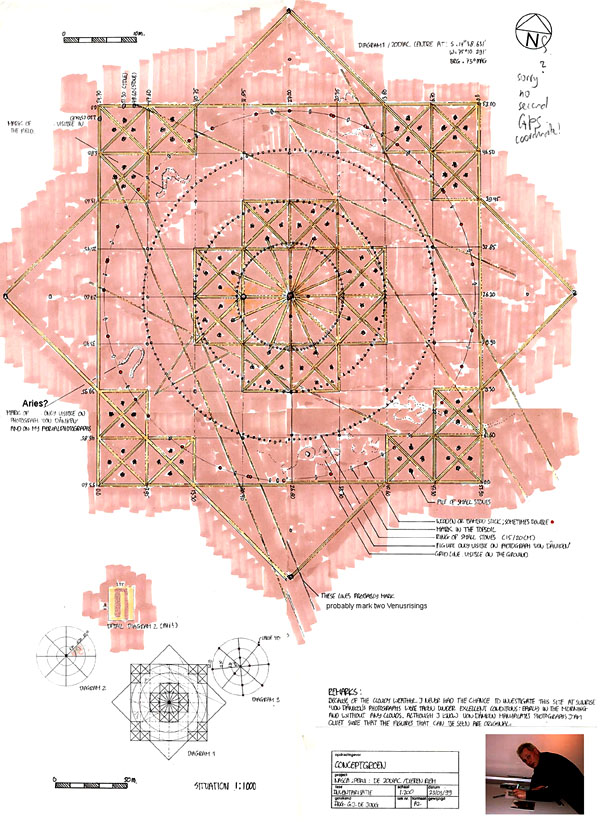
Sacred geometry at Nazca, Peru. This is nothing less than the predecessor of the Indian sacred geometric symbol known as a Shivalinga. (click for larger image)
There are a number of sites in Africa which may well turn out to be far older than sites in Turkey. Two of these come to mind. The first is a site now popularly known as 'Adam's Calendar' (Adam sure got around). Early (unofficial) claims place the establishment of this site between 50,000 and 75,000 years BCE.
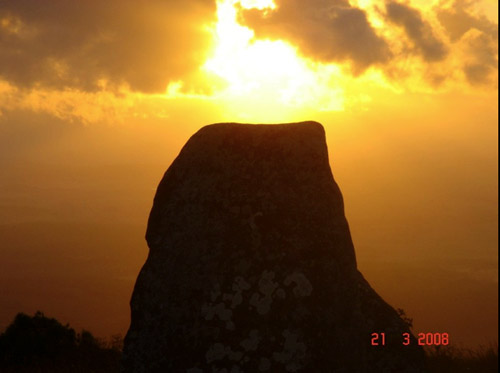
Ancient man site based in 'sacred geometry and archeoastronomy, from ??, known as Adam's Calendar
Whether the 'Adam's Calendar' site will prove to be that old is not as important as the fact that sacred geometry, astrological alignments are prevalent there, indicated yet another in a long list of geographically isolated communities which were in possession of sophisticated scientific information. How was this possible? There are only two answers to this enigma. The first has been the common response of all mainstream anthropologists and archaeologists for almost 2 centuries, is to claim independent invention (i.e. coincidence). The other possibility is that ancient man has ships capable of transoceanic travel, and understood navigation. This simple explanation, however, has been greeted with scorn and ridicule for decades, despite the overwhelming data supporting such a conclusion.
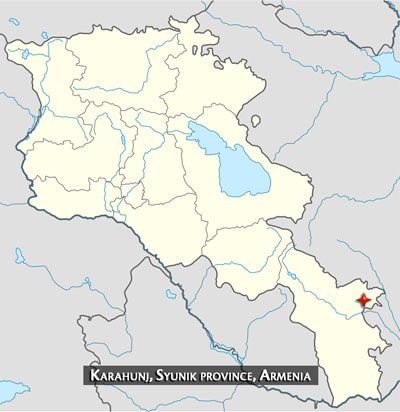
Location of Karahunj, Armenia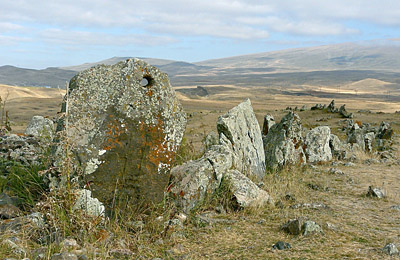
Standing stones of Karahunj (and one with sighting hole)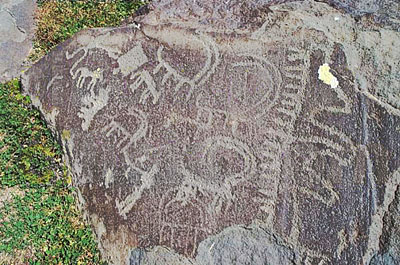
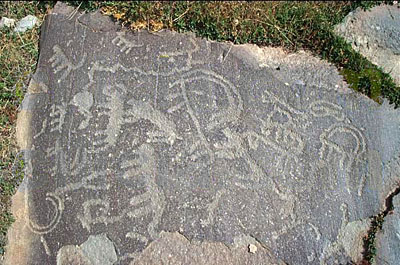
Petroglyphs from near Karahunj (compare these to the stylized 'sheep' with arc horns from the Mojave site)
Eastern California site with dolomitic limestone mortars (cupules) featuring Anatolian
"sheep of God" glyphs intermixed with Vinca characters
Some of the oldest examples of esoteric rock art come from sites in Turkey. The 'henge' of Karahunj – a stone archaeoastronomical complex near Sisian, Southern Armenia – dates back at least 7,500 years, and the recently discovered Gobekli Tepe temple site dates to the middle of the 9th millennium BCE (11,500 years ago).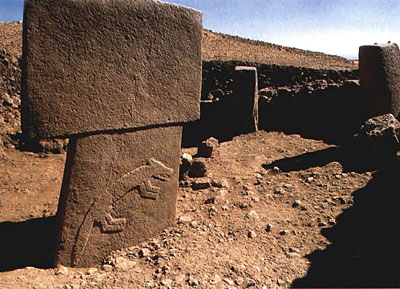
Temple stones featuring the earliest version of the jackal-god Anubis, guardian of the 'underworld'
Another site which bears mentioning is the PPNB neolithic site which shows promise is Nevalı Çori in the Euphrates Valley. This site is one of the oldest sites to date to feature sophisticated cult images. In the niche of a temple, the head carving (below) was deliberately facing to the SE; what was possibly the local Imbolc cross-quarter day alignment heading. (For more information on the astrological connections to OMMPA alchemy SUN, MOON & STAR' tab on this page of the web site)
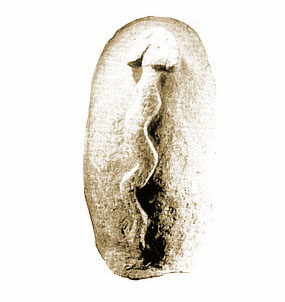
Archaic Nevali Cori (8,000 BCE) from Turkey. This clay head features the clearly identifiable Vedic Sikha in the shape of a mushroom, or serpent (or both)
One of the most ancient of traditions found From the Levant through Asia Minor and Asia (among Indians, Arabs, Persians and even Egyptians, etc) was that of the shaving of the head of males, leaving only a single tuft of hair on the crown of the head. Done when a child is young, or at some point in a young man's life (depending upon the culture), this tuft is often worn throughout life. Among the Hindus it is known as a Sikha.
Is it a coincidence that this tuft of hair appears as both a serpent and a mushroom in the sophisticated (fired) clay head found at the Nevali Cori habitation/temple site in ancient Anatolia (Armenia)?
Sikha - Wikipedia, the free encyclopedia
"The śikhā reportedly signifies one-pointed focus on a spiritual goal, and devotion to God. It is also said that the śikhā allows God to easily pull one to paradise . . . According to Smriti Shastras it is mandatory for all Hindus to keep sikha and the first three twice-born or dvija castes to wear yajnopavita, also called janeu or paita (sacred thread) . . ."
The symbol of the serpent has more than one meaning. As in the Caduceus, the serpent represented the Ida and the Pingala, two of the three energy channels in the human body through which it is said, Prana flows. The serpent also represents the 'coiled' kundalini energy that is said to flow up the center channel called Shushumna. This tree-fold energy channel is the inspiration for the well-known caduceus appropriated by western medicine as a symbol of health care.

Symbol of health in the ancient world, the Caduceus symbol includes the three energy channels of the human body: Ida, Pingala and Shusumna. The spherical terminal end of the Shushumna column represented the Pineal Gland.
NAGA and NADA (the HU Sound)
Serpent symbology was used in ancient times, represented the 'uncreated' sound heard in the upper left quadrant of the brain. Hence those who regularly used these 'elixirs' need up with a tuned and balanced brain (in terms of the corpus colossal energy). Most people have heard this sound, which the indians anciently called NADA, or the "uncreated sound." The term HU is also employed to san the same thing. This word or prefix) comes to us from ancient Europe or Greece. It is this connection to the sound of consciousness, or the sound of the celestial realms, that the term HU-man is etymologically derived.
And so the sound of a hissing in one's head, is an ancient sound known to the initiates of the ancient orders that made and used the "elixir of life" on a regular basis. The daily use of these elixirs to bring about longevity and vitality, are almost always linked to stories with snake entities, or serpent symbolism. From personal experience, as well from testimonies of many who have used Spagyric Arts' "Green Dragon" elixirs (Amrita•Elixir® and Azoth•Elixir), most people report not only 'hearing' this sound after regular use of these elixirs. This effect seems to become more noticeable after 2-4 weeks of use, but this depends solely on the spiritual sensitivity of the user themselves.
What I find even more interesting, personally, is that this sound — heard by most people under certain conditions — is altered by the use of the elixirs of life. How is it altered? The nominal experience of NADA in most people's lives is perceived as a hissing sound, what might be called pink or white noise. However, upon ingesting a powerful "alchemical" elixir (like Amrita•Elixir®), this sound changes. What normally sounds like random "white noise,' slowly begins to become coherent, locked into specific frequencies. At this point it sounds like the cyclic sound of a snake hiss. The resemblance is uncanny. It is for this reason that the global brotherhood of occultists who practiced alchemy and understood its artifacts, who heard this sounds in their heads every day, were called Naga, or the 'snakes.'
<http://sureshemre.wordpress.com/2010/09/04/sound-archetype-hu/>
"One of the common threads in the wisdom traditions of the world is the special place of the Divine Word in the creation theories. In this context, the sound archetype HU is particularly fascinating. It permeates the spiritual traditions of the Near-Eastern cultures. One can also find many examples of HU in the Indo-European languages. HU is one of the three primary sound archetypes of the Near-Eastern cultures along with YA and RA." In ancient Egyptian cosmology, HU is complimented by Sia which represents the Cosmic Mind. In this sense Sia is very close to the Greek Logos. In addition to Linguistic observations Hazrat Inayat Khan provides an authoritative explanation of HU in his remarks on "Sound Archetype: HU"
“The Supreme Being has been called by various names in different languages, but the mystics have known him as Hu, the natural name, not manmade, the only name of the Nameless, which all nature constantly proclaims. The sound of hu is most sacred. The mystics called it ism-e Azam, the name of the Most High, for it is the origin and the end of every sound as well as the background of each word. The word hu is the spirit of all sounds and of all words, and is hidden within them all, as the spirit is in the body. It does not belong to any language, but no language can help belonging to it. This alone is the true name of God, a name that no people and no religion can claim as their own. This word is not only uttered by human beings, but is repeated by animals and birds. All things and beings proclaim this name of the Lord, for every activity of life expresses distinctly or indistinctly this very sound. This is the word mentioned in the Bible as existing before light came into being.”
The basis of the Tibetan healing arts comes from Bhaisajya-guru, Lapis Lazuli Radiance Buddha – the ‘master of healing.’ The begging bowl is made of lapis lazuli and contains the very elixir of life. The use of a mineral name for the elixir is not new. The Egyptians used to encode the name for the 'white stone' [dolomitic limestone] using a mineral associated with the formation of white dolomites. This stone is the semiprecious Malachite. When processed (first by oxidation, then reduction), as a base is added to the (usually a) chloride solution, the pH begins to rise from neutral pH (7.0). By 8.0 pH the solution suddenly becomes a rich, cobalt colored blue, before passing through the rest of the oxidation states inherent to dolomite. One of the major ingredients found in dolomite is Manganese. It is the manganese pH shift that produces most the colors of the elixir during production. The blue of processing is similar to the color of Lapis Lasuli. Hence, colors can be used to code both alchemical source materials, as well as alchemical processes.
An indication of what this Elixir is that resides in this bowl is found in a story related about the Buddha when he passes the night away at the hermitage of Uruvela. After a battle with a malevolent Naga, resulting in a raging fire, the Buddha had survives. The Buddha is then seen with a begging bowl in his arms and inside is a peaceful, coiled snake. The Buddha had slain the dragon of its fiery notions and emerged with a beneficial result. The fire, the serpent and Buddha are associated in symbolism because Buddha learn to make the elixir Amrita, using alchemy (likely fire oxidation), and the Nada sound of the mind was always symbolized by the symbol of the serpent. Those who obtained the practical knowledge of how to make these elixirs, were always associated with serpents, as were the Pharaohs, Hermes Trismegistus (Thoth), Apollonius of Tyana and many others.
The coming or future Buddha is said to currently reside near, under or even in the Naga tree, where he learns wisdom from the Nagas. This tree would have originally been a DMT-containing tree like the Acacia, although this connection has been obscured through time.
Ancient stories tell of the Naga of Kashmir instructing Apollonius of Tyana. This is the same Kashmir where the serpent tribes became famous for their healing skills. There is a theory that the Nagas descended from the Scythic race and when the Brahmins invaded India they found a race of wise men or snakes (half gods, half demons). These men were said to be teachers of other nations and themselves instructed the Hindu’s and Brahmans – no wonder that Apollonius visited them.
In the Bhagavata Purana there is a description of the Bila-svarga or the regions of the Nagas said to be subterranean. Some of the names associated with this place relate remarkably to the Mesoamerican and South American terms such as Tlaloc.
"My dear king, beneath this earth are seven other lands (land masses), known as Atala, Vitala, Sutala, Talatala, Mahatala, Rstala and Patala . . . the residents are known as Daityas, Danavas and Nagas . . . brilliantly decorated cities . . . wonderful houses, walls, gates, assembly houses, temples, yards and temple compounds . . . The houses for the leaders of these planets are constructed with the most valuable jewels, and are always crowded with the living entities known as Nagas and Asuras . . . Many great serpents reside there with gems on their hoods, and the effulgence of these gems dissipates the darkness in all directions. Since the residents of these lands drink and bathe in juices and elixirs made from wonderful herbs, they are freed from all anxieties and physical diseases. They have no experience of gray hair, wrinkles or invalidity."
This is an idea of those using the elixir of life being immortal, is one of the most ubiquitous myths on earth. In ancient india the use of these alchemical elixirs was associated with Shiva, and the term Mahakala, which refers to Shiva as being beyond the future, or (Indian bhavishya kla) death.
There is currently a lot of debate about the original inhabitants of India – whether Aryan or Naga, but the fact remains, whether the Nagas were Aryans or not, they were an ancient inhabitant. The very fact that they were mentioned in the ancient Rig Vedas shows this to be true. They also intermarried with the Royal families, hence the popular myths of serpent kings.
"Then come the Naaga, the Siren serpents, whose worship has been so important a factor in the folklore, superstition, and poetry of India from the earliest times down to-day. Cobras in their ordinary shape, they lived, like mermen and mermaids, more beneath the water [referring to living in the ‘underworld’ or the New World, that is, they lived on the other side of the earth, under or separated from India, by the great oceans], in a great luxury and wealth, more especially of germ, and sometimes, as we shall see, the name is used of the Dryads [Druids?], the tree-spirits [a familiar Druidic religious concept], equally wealthy and powerful. They could at will and often did, adopt the human form and though terrible if angered, were kindly and mild by nature. Not mentioned either in the Veda or in the pre-Buddhist Upanishads, the myth seems to be a strange jumble of beliefs, not altogether pleasant, about a strangely gifted race of actual men; combined with notions derived from previously existing theories of tree worship, and serpent worship, and river worship. But the history of the idea has still to be written. The Naagas are represented on the ancient bas-reliefs as men or women either with cobra’s hoods rising behind their heads or with serpentine forms from their waist downwards." Rhys Davies, Buddhist India, p.223.
TWO WORLDS - HISTORY'S GREATEST SECRET
TWO WORLDS
History's Greatest Secret
COPY AND MORE IMAGES COMING SOON!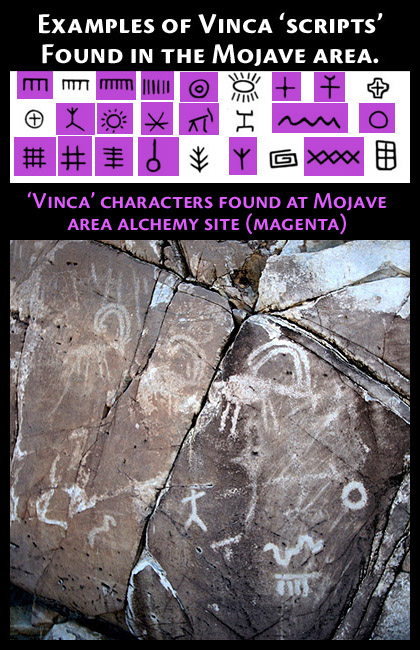
Vinca characters pecked into dolomitic limestone, Eastern California. Glyphs in purple
are all found at this one site, and others are common throughout the area.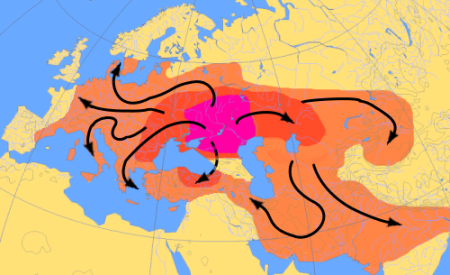
Tracing linguistic characteristics from their source in Turkey (ancient Armenia), scientists have traced the
migration of Indo-European peoples across Europe and Asia (approximately 8,000-1000 BCE)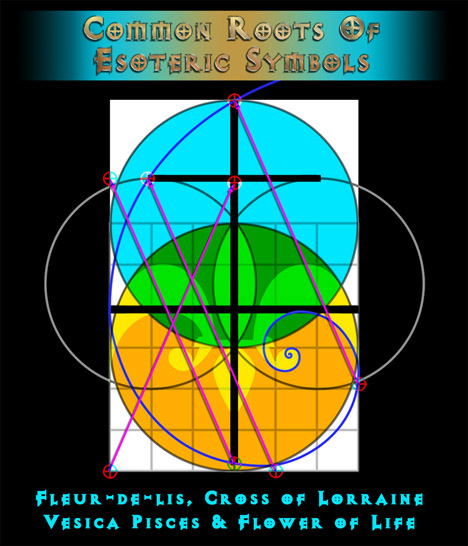
Esoteric symbols found on both hemispheres. The Visces Pices is a symbol of the 'Two Worlds' esoteric secret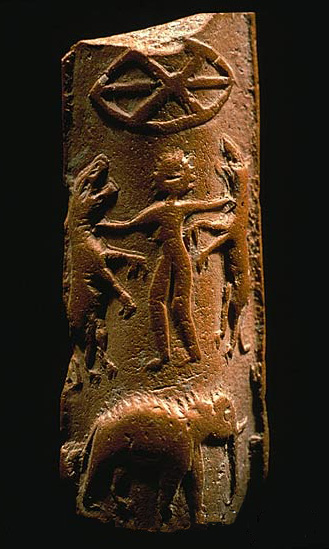
'Two Worlds' sun (headed) dance and astrological cusp imagery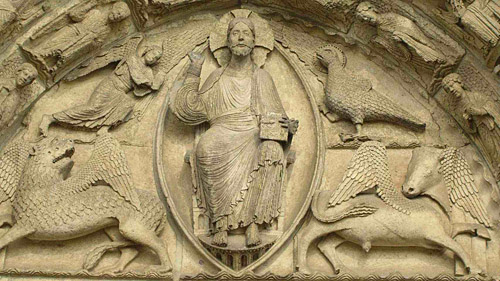
'Two Worlds' encoding_Christ in a Vesica Pices_Chartres Cathedral
NAGAYUNA (INDIAN ALCHEMY)
NAGAYUNA
Nagayuna is the Indian branch of alchemy. Its symbol — the entwined serpents — is seen all over India looking virtually the same as the Western caduceus. The aim of its practitioners is to preserve the elixir of life, in order to unify the body's energies. The symbol of these two entwined serpents represents the link between the earth and the heavens, and the transition from the lower levels to the higher. This symbol can be found outside temples, on stone tablets (called 'nagahals' or 'nagakals'). The central idea underlying Indian Alchemy was once the production of the Elixir of Life, and the preservation of the body-mind complex both physically and spiritually.
MORE COPY COMING SOON!
'TWO WORLDS' BOTANICAL EVIDENCE
'TWO WORLDS' BOTANICAL EVIDENCE
One of the great examples of both the presence of an advanced science having existed in prehistoric times, and the reality of regular, on-going transoceanic travel and trade, can be found in a single common plant: corn. The following summaries of the India-America corn connection will suffice to introduce this topic as it pertains to the India-America connection, and touches on the larger issue of multinational trade as an indicator of the truly global extent of early maritime exploration and penetration.
As we have already mentioned the many artifacts which prove diffusion theory not only tenable, but which demonstrates that anti-diffusionist, euro-centric isolationist anthropology needs to be totally scrapped, are to be found among cultures impacted by their proximity to major maritime (and river, lake) travel corridors (see Corridors of the Magi). Although the evidence we have covered so far has been primarily of an occult/esoteric nature, and focuses on evidences for the 'Two-Worlds' presence of sacred sciences of alchemy, astrology and the shared use of identical entheogens on both hemispheres, the list of evidences in other areas is just as extensive.
Below we present some botanical evidence for your consideration. The data so far compiled in this area of research is staggering, and research has only really just begun to surface among scientists. The usual approach to the sheer volume presented has been to dismiss imagery as actually representing some other pant indigenous to the area in question. Some arguments leveled against a diffusionist position might be worth considering, the majority of arguments are not tenable upon closer analysis and consideration. In lieu of the weight of evidence in favor of transoceanic travel prior to Columbus, weak evidence should be discarded.
The following represents only the most cursory introduction to this field if inquiry. The reader is politely directed to our Suggested Reading list for further research.
MAIZE IN ANCIENT INDIA
By J.H. McCULLOCH
Ethnobotonists and other Indologists and researchers have debated in published articles and research whether or not various plants believed to have originated in the New World actually had their genesis in India. Indologist and Ethnobotanist Shakti M. Gupta of Delhi University confirms the presence of maize and at least five other New World plants in pre-Columbian temple sculptures in India in her new book, Plants in Indian Temple Art (B.R. Publishing Corp, Delhi) . . .
Gupta’s earlier books, including Plant Myths and Traditions in India (1971), Vishnu and His Incarnations (1974), Legends around Shiva (1979), and Festivals, Fairs, and Fasts of India (1990), establish her as an authority on Indian mythology and, in particular, the role of plants in Indian history . . .
Prof. Gupta writes:
Different varieties of the corn cob [Zea mays Linn.] are extensively sculpted but only on the Hindu and Jain temples of Karnataka. Various deities are shown as carrying a corn cob in their hands as on the Chenna Kesava temple, Belur. The straight rows of the corn grains can be easily identified. In the Lakshmi Narasimha temple, Nuggehalli, the eight-armed dancing Vishnu in his female form of Mohini is holding a corn cob in one of her left hands and the other hands hold the usual emblems of Vishnu. .... In the Trikuta basti, Mukhamandapa, Sravanbelgola, Karnataka, a 12th century A.D. sculpture of Ambika Kushmandini sitting on a lotus seat under a canopy of mangoes holds in her left hand a corn cob. Plate 223 depicting a Nayika holding a corn cob in her left hand is from Nuggehalli, Karnataka.
Temples where the sculptures of corn cobs are found are dated 12-13th century A.D. The common belief . . . is that maize originated in Mexico and came to India by the 11th-12th century. By the time these temples were constructed, maize would have been fairly common in India . . .
Gupta does not stop with maize, but goes on to identify sunflower, pineapple, cashew, custard apple and monstera, all new world species, in pre-Columbian temple art . . .
. . . She finds Sunflower (Helianthus annuus Linn.), a native of Central and South America, in the Rani Gumpha cave, Udaigiri, 2nd century B.C. (p. 30). Pineapple (Ananas cosmosus [Linn.] Merrill), a plant indigenous to Brazil, is, according to Gupta, "clearly depicted" in Udayagiri cave temple, Madhya Pradesh, circa 5th century A.D. (p. 18). Cashew (Anacardium occidentale Linn.), a native of Brazil, is depicted in a Bharhut stupa balustrade relief, circa 2nd century B.C. (p. 17). Gupta finds custard apple (Annona Squamosa Linn.) sculpted at Bharhut, circa 2nd century B.C., and at Kakatiya, Karnataka, 12th century A.D. (pp. 19-20). According to the Encyclopaedia Britannica, this plant is native to the New World tropics and Florida. And finally, monstera (Monstera deliciosa Liebm.), also known as split leaf philodendron, a large evergreen climber native to Central America, appears in Hindu and Jain temples in Gujarat and Rajastan from the 11th to 13th centuries (pp. 108-9).
According to Gupta, the chili pepper (Capsicum annuum Linn.) is mentioned in the Siva and Varmana Puranas, circa 6-8th centuries A.D. Unfortunately she does not give page references or indicate the term used for it there, and the only temple carving she has found of it dates to the 17th century A.D. This very important native of Mexico and Latin America deserves further investigation.
. . . Gupta’s book contains a wealth of evidence for pre-Columbian contacts between the New World and the Old, despite the fact that she is not particularly interested in, or even aware of, the possibility. She does repeatedly reject reports that such-and-such plant was introduced by the Portuguese in the 16th century, but in her conclusion suggests that perhaps plants such as the pineapple and custard apple "were indigenous to India."
Despite the "common belief" that maize was brought to India from Mexico prior to the construction of the Hoysala temples, she reports that "Maize is also believed to have an Indian origin..." It is my understanding that this is botanically impossible, although it is quite conceivable that maize was present in the subcontinent for many centuries before the Hoysala dynasty, and that distinctively Asian varieties were developed early on.
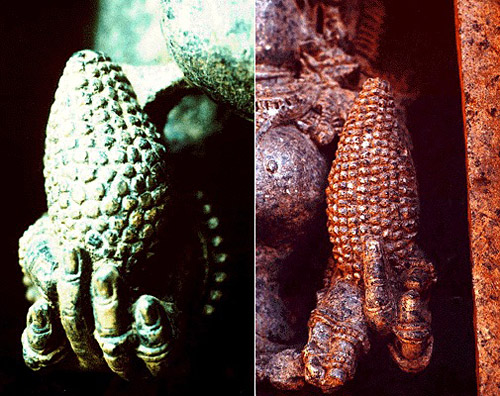
Corn cob in the hands of dieties, from Nuggehalli, Karnataka and Chenna Kesava temple, Belur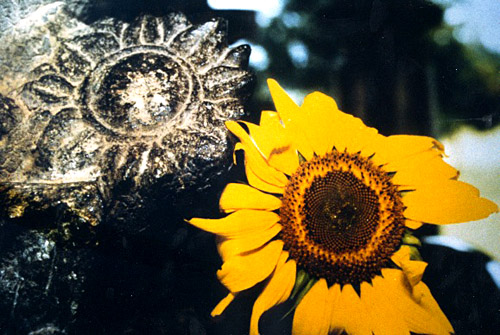
Sunflower carving_Rani Gumpha cave, Udaigiri, 2nd cent BCE
PRE-COLUMBIAN MAIZE IN CHINA AND INDIA?
Dr. Carl Johannessen Research
The evidence of maize in archaeological sites in China and its depiction in Hoysala Temples in India, both dated before the 15th century A.D., suggests that this domesticated crop was diffused by human action before the arrival of Columbus in the New World. The implications of this evidence are of great magnitude, since the presence of maize in Asia indicates that humans were able to migrate between both hemispheres; more than likely through trans-oceanic means of travel.
Maize in pre-Columbian India is documented in my article with Anne Z. Parker, "Maize Ears Sculptured in 12th and 13th Century A.D. India as Indicators of Pre-Columbian Diffusion," Economic Botany 43 (2), 1989, pp. 164-180.
These sculptures are built into temples as load bearing walls with mortise and tenon joints at top and bottom of each sculpted block. They bear the load of stone beams and stone roofs on top. Temples are dated in written historical records in South India. They contain who built the structures, when they were built, the cause for which they were built, and who the sculptors were. Archaeological discoveries in the last decade have similar carvings of maize, etc., and indicate that the sculptural work was typical of sculptures of the reigning Hoysala Dynasty of the 11th to 13th C.E. centuries. Direct observations in the temples show that no two maize ears are identical. Each of the more than 100 temples has similar carvings. Over 80 large ears are present in the last and most beautiful Somnathpur temple with several hundred examples of smaller ears elsewhere, in the roof for example, and these corn ears demonstrate that the designers appreciated the multi-seeded fertility symbol, just as they carved the images of the Annonas and sunflowers, which are multi-seeded fruits decorating the walls and courtyards.
Maize breeders in India, China, United States, and Great Britain, who have seen extensive collections of the illustrations, concur with me that only sculptors with abundant ears of maize as models could have created these illustrations of maize. No other biological product has these assemblages of anatomical charateristics that are within the envelope of variations of maize. I grant that these findings have been thought to be impossible in the earlier belief systems that maintained that there was no significant contact between New and Old World. These anti-diffusionist beliefs have to give way to reality. Archaeological findings will soon be found to verify these predictions, which is also a facet of the Scientific Method.
We are currently finding much more evidence of contact between Asia and the Americas. Many of these relate to DNA complexity of biotic forms that can be tested for indications of genetic similarities and genetic distances, but written literature, paintings, sculptures, and archaeological finds all support not detract from the diffusion hypothesis of very ancient sailing contact in the building of high civilizations around the world.
INTRODUCED PLANTS IN HAWAII PRECEDING EUROPEAN EXPLORATION
Sam Cox_December 2000
. . . In Hawaii, there are 27 plants that are known to have been brought to shore from India, Asia, Indonesia, America and even Africa (Table 1). Throughout French Polynesia, which contains some of the easternmost Pacific islands, crops were grown before Europeans arrived that originated on both sides of the Pacific. It is undeniable that contact took place between America and Pacific Islanders.
Archaeological evidence is lacking for most assertions of Polynesian contact with South America, most likely due to the corrosive seawater which would obviously be in contact with most possesions of the Polynesians. Additionally, the Polynesians did not form metal tools, but used wood instead for almost everything they needed. It is not surprising in the least that archaeological evidence is not abundant in support of trans-Pacific cultures. On the flip side, there is little evidence against it.
The presence of the idea, if not the actual product, of Central American corn in China, the cultivation of South American sweet potatoes in Polynesia, the use of Indonesian coconuts and bottle gourds in South America, the presence of over 25 Asian/Indian native plant species in Hawaii, as well as the other 90 or so genera present on both sides of the Pacific by 1400 clearly indicate some form of intentional or unintentional human transfer of plant germplasm which significantly preceded European exploration of this part of the world. The means have also been identified, as Polynesians clearly had the ability for sucessful long-range seafaring, as proven by multiple voyages of primitive replica vessels . . .
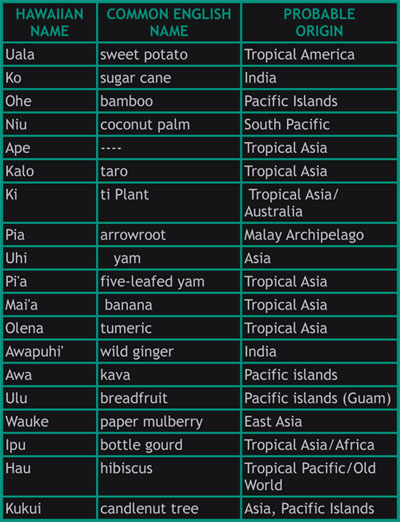
GLOBAL SERPENT SYMBOLOGY
GLOBAL SERPENT SYMBOLOGY
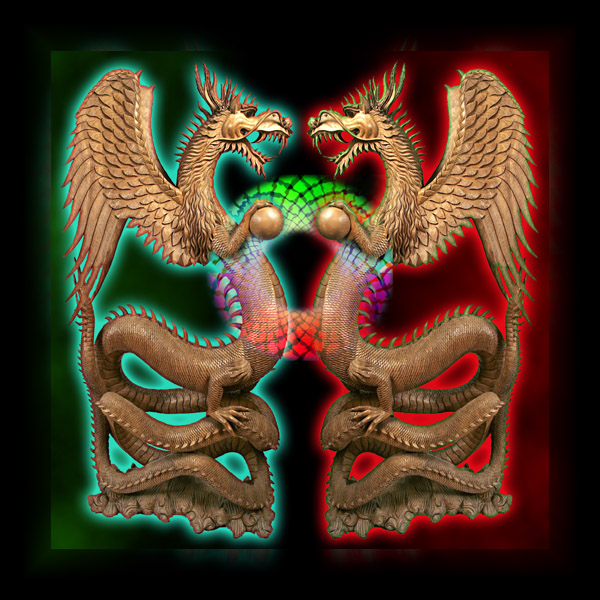
Ubiquitous Symbols Of Antiquity
Around the world the symbol of the serpent reigns as one of the most ubiquitous esoteric symbols of antiquity. The real question is, why? Snakes are reptiles, and reptiles are, by their nature reclusive animals, relying on stealth to capture their prey. The vast majority are non toxic. So why the veneration of serpents?
We see these images worshipped as symbols of wisdom, intelligence, power and fertility, around the world. For some six thousand years or more the symbol of the Nāgas serpent deities have been adored in India and Indonesia. In many cases these Nāgas are hybrid human-serpents forms shown intertwined in the ecstasy of the procreative act. This symbolism is not unique to ancient India, however, and appears to have been used within sacred temples, and may have been a symbol used in the Holy of Holies of the ancient Hebrews as well.
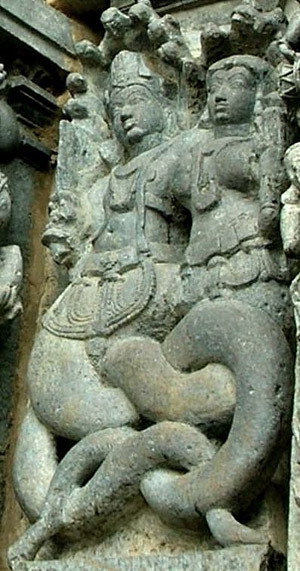
A Hoysala sculpture of a Naga couple_Halebidu
Likewise, serpents played a major role in esoteric religious symbolism in the Euphrates Valley, and Levant for many thousands of years. The serpent imagery, known as the Uraeus is prolific in Egyptian art, and is seen protruding from the foreheads of Egyptian gods, other deities and rulers, and also on the Sphinx, which is arguably pre-Dynastic, and was built before the Egypt existed as a nation.
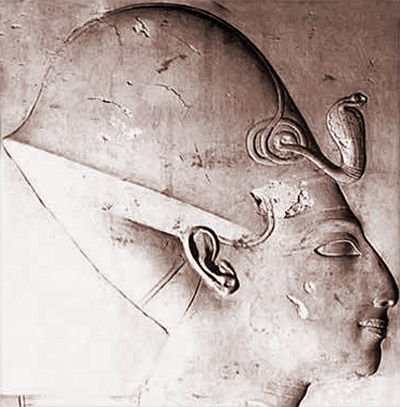
Egyptian Uraeus
Serpents climbing a central pole forms the ancient image of the Caduceus, Rod of Asclepius, and appear extensively in Nordic sculptures – which is odd since these animals are a rarity in the far north.
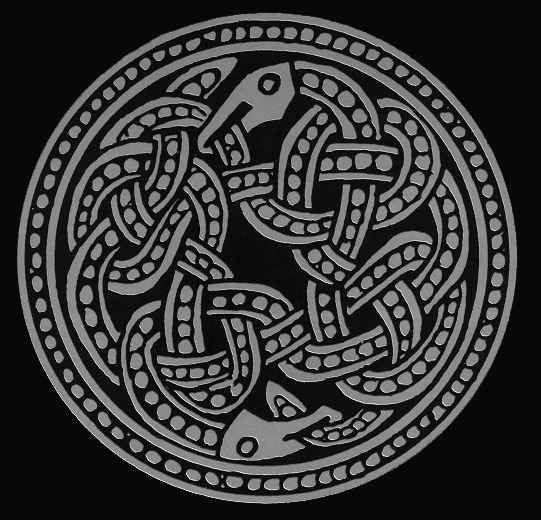
Nordic serpent Ouroboros-nnott imagery
Esoterically, the serpent has always, and universally, been a symbol of wisdom. Even in the anomalous example of the Hebrew version of the Creation Myth, where the serpent is associated with evil, the serpent is still a symbol of cunning (i.e. warped wisdom). In almost all earlier examples, from cultures around the world, the serpent (or dragon) imagery is linked to wisdom and intelligence.
In the case of world-destroying dragon symbology, a wholly different set of circumstances lies at the core of the use of the image of a serpent (or dragon) as a harbinger of destruction. This is based in comet and asteroid (meteoric) impact scenarios, which are only touched upon on our site, but which does form a major theme in ancient history.
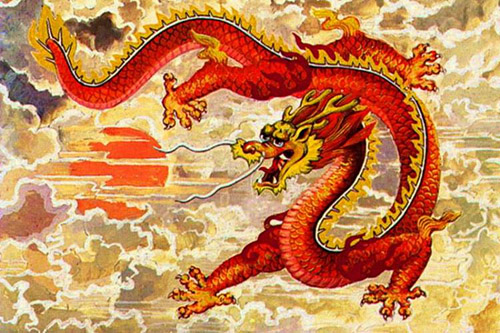
Asian Sky Dragon
By the 15th Century BCE both Aryan persecution of the esoteric religious heritage of the people of the ancient Indus Valley, as well as Hittite persecution of the use of the symbol in Asia Minor and the Levant, had a detrimental affect on the use of this symbolism. However, the attempt to destroy the 'people of the snake' (Nagas) in India, failed utterly to eliminate the symbol from the many widespread Asian cultures. This symbolism is still found throughout Asia and South East Asia, all the way into China, where the serpent, as a dragon, has become irreversibly linked to the idea of China itself.

It is perhaps in the Caduceus that we see the best surviving example the original esoteric principle — as it was conceived in archaic times — embedded in the imagery of the intertwining serpents, central shaft and cosmic egg. In fact the cosmic egg — which represents the human Pineal Gland, is a central theme in the ancient Serpent Mound in Ohio, in the United States.
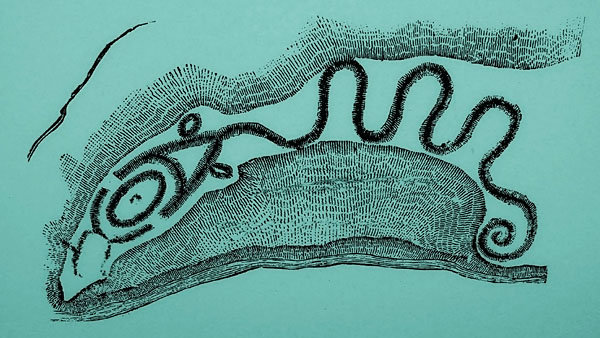
Great Serpent Mound_Ohio
MORE COPY AND IMAGES COMING!
ANCIENT ESOTERICISM
ANCIENT ESOTERICISM
PASHUPATI & CERNUNNOS
Below, we see the symbolic representation of the Celtic 'god' Cernunnos. This 'god' has its precedent in the Indus cultures symbol of Pashupati, a symbol which can be shown to have preceded Cernunnos by at least 4,000 years.
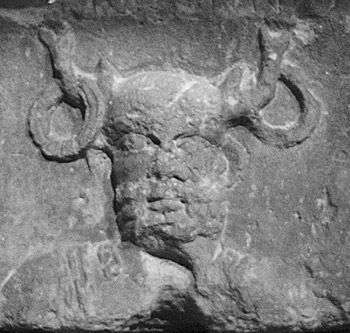
Relief showing details of the head of the Celtic god Cernunnos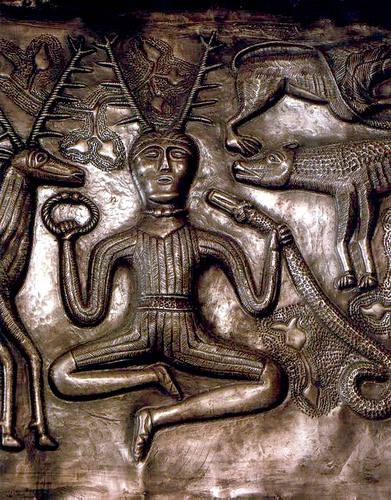
Cernunnos depicted in relief on the Gundestrup Cauldron, holding the symbol of consciousness (serpent)
and immortality (serpent biting its own tail, known as an Ouroboros) [fig.1]
Cernunnos is an omnipresent god of the Celtic world. However, from this single occult symbol for the ancient Magi/Magu/Ma'Gu/Mako sprang many iterations which appeared across Europe from the Bronze and Iron Ages forward to the time of the Roman Empire. Lugh,
Ultimately steeped in paganism (as opposed to occultism), and in an attempt to unite their kingdom by unifying all religions (something carried to a successful conclusion with the Christian tradition, following the successful suppression of it origins in Gnosticism), the expanding Roman Empire spread its political and religious influence across Europe and the Mediterranean. Their leaders combined and renamed local and regional gods and religious traditions with such frequency, that the root tradition which gave rise to Cernunnos gets lost in the mythological tumult. Only following the discovery of the now famous silver Gundestrup Cauldron, was it clear that a well established tradition surrounding Cernunnos had been established in Northern Europe, imported from India through Turkey and Persia.
Gundestrup Cauldron
"For many years scholars have interpreted the cauldron's images in terms of the Celtic pantheon. The antlered figure in plate A [fig. 1] has been commonly identified as Cernunnos [Note: the elephants depicted on plate B clearly display the Indian connection. These are indonesian elephants].
The silverworking techniques used in the cauldron are unknown from the Celtic world, but are consistent with the renowned Thracian sheet-silver tradition; the scenes depicted are not distinctively Thracian, but certain elements of composition, decorative motifs and illustrated items (such as the shoelaces on the "Cernunnos" figure) identify it as Thracian work.
The silver in the cauldron cannot be tracked to an individual mine by lead isotope analysis, since the melted coins such artifacts are normally made of can originate in many mines. The variety of coin used has, however, been determined with some certainty, by careful analysis of weights: a total weight of 9445 grams was reconstructed for the entire cauldron, and 4255 grams for the bowl alone, and these were found to be nearly precise integer multiples of the weight of the Persian siglos, a coin weighing 5.67 grams. By this calculation 1,666 coins were used in total, 750 of them in the bowl. This supports an origin in Thrace, where Persian weights were in common use. The phalera base plate, added to the cauldron at a later date, also originated in Thrace."
Cernunnos is directly linked to the original – and far older – Indus symbol called Pashupati, whose origins can be shown to have preceded the Cernunnos imagery by more than 4,000 years! As the original esoteric traditions of ancient Armenia, Iran and India became diffused and confused, many 'gods' would spring from local traditions. Originally encoded esoteric images, with multiple levels of spiritual and alchemical interpretation, once this knowledge was lost, the image alone remained.
Over the millennia a symbols' (R.A Schwaller de Lubics' 'neters') true meaning may be lost. This happened to the Pashupati/Cernunnos esoteric encoding over time. The Celtic gods of Lugh, Belenos (or Belos), and other less notable gods, all have their origins in the original god which preceded them and was renamed, Cernunnos. This god is always linked to the usual attributes: consciousness, metal smithing, creativity and productivity – with the concept of virility thrown in for good measure. These are all connected to the concept of the use of the 'elixir of life' by the early esoteric Indo-European cultures. There can be little doubt that Cernunnos is simply a later version of the Indus figure Pashupati.
The fact that the Gundestrup Cauldron – as it is known – was discovered in the city Gundestrup, in the Northern European nation of Denmark, thousands of miles from sources of the Tracian silver which was used to make it, is more evidence of the ancient connections between the Indus cultures and the far northern extremes of Europe. Those connections likely include obvious maritime traffic and overseas shipments of Tin (from Cornwall, England), but there are certainly other reasons for the millennia long interplay of commerce and religion between them.
The Vikings would continue to conduct such trade across Europe well into the current era, by way of navigable rivers and lakes. Certainly this sort of travel was the most common routes for trade goods, but some transoceanic traffic is also a matter of historic records.
As we will see, the Pashupati image itself suggests the existence and use of glass lenses far back in antiquity. Glass lenses, discovered in the 12th century in Gotland, prove that there were those who understood optics long before this sort of science was rediscovered by post-reniassance science. From this article the following quote is notable:
"It seems that elliptical lens design was invented much earlier than we thought. Then the knowledge was lost for nearly a millennium."
As we have suggested many times within the pages of this web site, some individuals among the ancient peoples of this world, had high science, 'sacred science,' which was, in its own way, as advanced as anything we have today. In some cases, their knowledge exceeded that which makes it into the modern public domain, although, we we have stated for the record, it appears that there are those who do understand the aether, and the implications of many eye witness accounts suggest that entire weapons systems appear to be based in just such occult science.

Gotland Island lenses from the 11th century are comparable to lens technologies of the 1950s
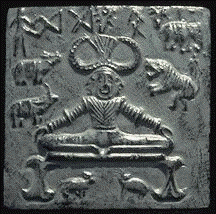
Esoteric imagery of Pashupati, embossed into an clay seal (Indus Valley, ca. 4,000 BCE)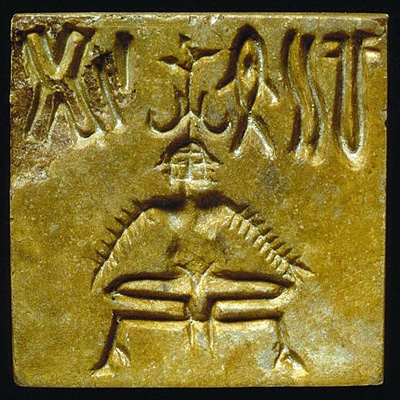
Another Pashupati-embossed clay seal (Indus Valley, ca. 4,000 BCE)
Above we see the well known Pashupati iconography, as it is often found on inscribed clay "seals' in the Indus Valley centers like Harappa and Mohenjo-Daro. Below we list the major features of Pashupati, and compare these to Cernunnos.
COPY AND CHART COMING!
One of the most startling discoveries concerning Pashupati, is a breakthrough in interpreting not only the 5 animals surrounding him, but the very shape and look of this enigmatic figure. We will see that everything about this seated god figure has direct alchemical connections – connections which will answer the many questions concerning the meaning o this figure for all time. A bold statement? Certainly. But we believe this evidence is incontrovertible once the evidence is carefully considered. (Please review the imagery presented in the flash animation below.)
COPY AND ANIMATION COMING!
THE PROMISED LAND
THE PROMISED LAND
REFUGEES & SPIRITUAL GIANTS
COPY COMING SOON!
